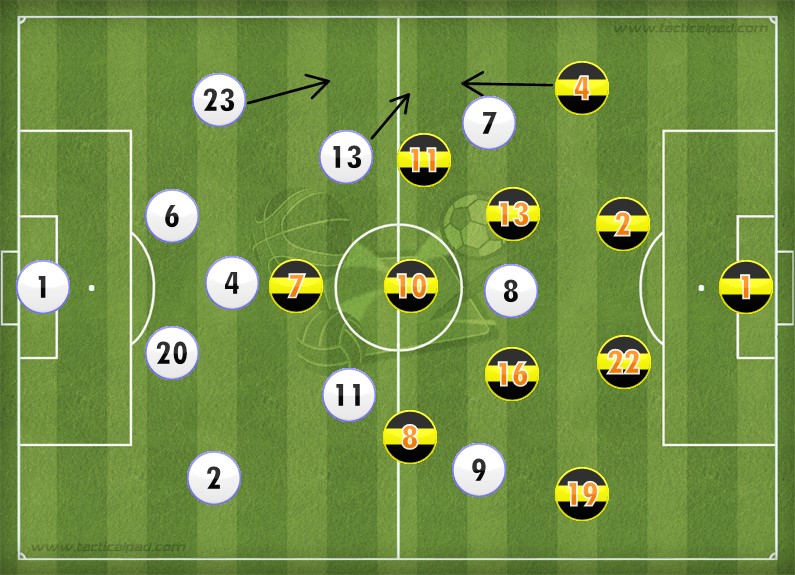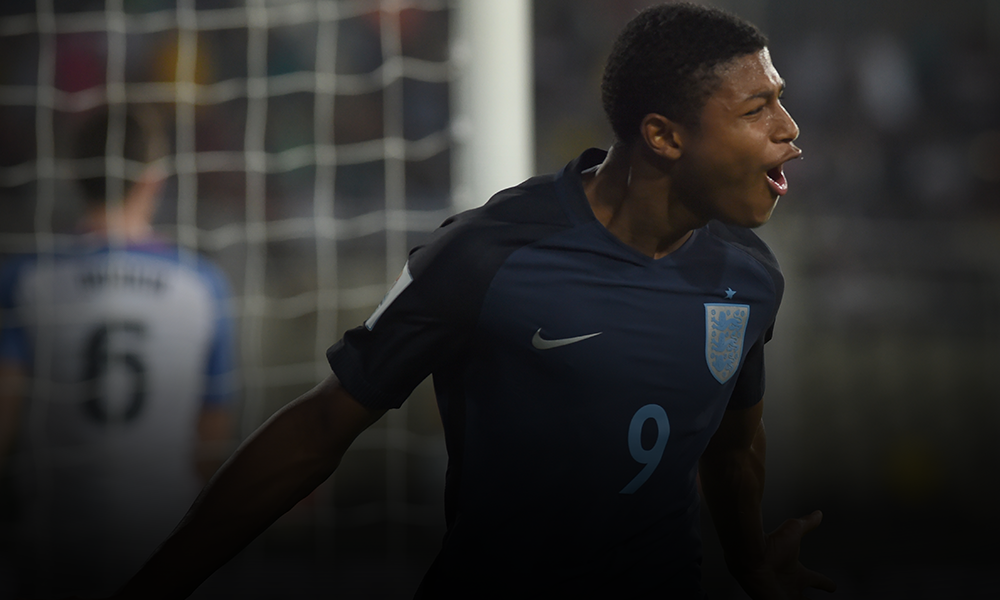Michael Thomas provides a detailed tactical analysis of the opening game of the Copa America which finished USA 0-2 Colombia.
USA 0-2 Colombia

Made using Tactical Pad
United States of America (4-3-3): Guzan; Brooks, Cameron, Yedlin, Johnson, Bradley, Jones (Nagbe 66’), Bedoya (Zusi 86’), Wood (Pulisic 66’), Dempsey, Zardes
Colombia (4-2-3-1): Ospina; Zapata, Murillo, Diaz, Arias, Perez (Sanchez 86’), Torres, Cuadrado, James (Celis 72’), Cardona, Bacca (Moreno 88’)
The highly anticipated opening match for the Copa America Centenario between the United States and Colombia presented an interesting matchup between two sides attempting to establish themselves as major competitors on the global stage.
The Americans have qualified for seven consecutive World Cups and advanced to the Round of 16 in three of the previous four. A strong showing against South America’s finest would further burnish their reputation heading into World Cup Qualifying. Meanwhile, the Colombians ended a 20-year World Cup drought with a quarterfinals appearance in 2014, and a Copa America title would propel Los Cafeteros’ profile to heights never before reached.
Americans Build Possession but Fail to Create Chances
Jürgen Klinsmann often speaks of his desire for the United States to play progressive, attacking football but usually settles for a more reactive approach against top opponents. Perhaps attempting to capitalize on the home field advantage, Kilnsmann departed from this strategy and lined up in a possession-oriented 4-3-3 with Jermaine Jones and Alejandro Bedoya deployed as 6s and Michael Bradley playing as a single pivot.
The Yanks failed to make any impact despite maintaining over 60% possession in the first half due to their poor positioning. As the above graphics illustrate, Wood, Dempsey and Zardes remained high up the pitch when the US had possession. With Bradley opting to remain just ahead of the center halves, Bedoya and Jones were often the only two players available to receive passes in the middle of the field.
As both players are more industrious than technical, the Americans struggled mightily to advance the ball into Colombia’s third. When the Americans were able to squeeze a pass to one of the forwards, the recipient usually managed to receive the ball with his back to goal and two or three Colombian players quickly closing space around him.
While this strategy largely failed, the Americans did manage to draw several fouls in central zones and created one excellent opportunity when Zardes cut inside from the left and laid it off to Dempsey who narrowly missed his left-footed strike from just outside of the box.
Colombians Excellent in Defense, Opportunistic in Attack
Colombia’s primary objective throughout the match was to deny access to the middle of the field, so they happily conceded possession and took what was given to them. In this case an isolated Michael Bradley.
While Bradley was far from his best, his high number of turnovers was largely related to massive amount of space between him and the nearest forward player. In the above graphic, Bradley can’t connect with the distant 6s and loses the ball on the left side of the field. The Colombians pounce with Cuadrado, James, Bacca and Cardona fanning out across the width of the American back line and charging forward. Jones and Bedoya are too far away to close down the runners, and the movement ends with DeAndre Yedlin conceding a penalty using his arm to block Cardona’s shot.
The Americans moved their back line increasingly forward as they searched for a goal, so the Colombians continued to find counter attacking opportunities throughout the second half.
Their best opportunity arrived in the 77’ when Bradley lost control of the ball, this time near the right wing, and allowed Cardona to play a through ball between the center halves to an onrushing Bacca who managed to only slam his shot against the post.
Set Pieces Decide the Match
While the Colombians were clearly the better team from the run of play, they won the match by decisively winning set pieces, an area of the game where the Americans are usually very strong.
Cristián Zapata’s opening goal resulted from a well-designed pick play reminiscent of something the Golden State Warriors would draw up for star guard Stephen Curry. Zapata used the pick to create space between Geoff Cameron and himself, and while Cameron made the correct decision to slip underneath the pick, he failed to cut off the ball before Zapata could release his volley.
On the other end of the pitch, the Americans actually drew a decent number of free kicks in central areas but only Dempsey’s curler on 64’ managed to challenge Ospina. Brooks also had a very good header from a corner, but a defender well-positioned on the near post was able to clear.
Even had Guzan managed to block James’ penalty, the Americans still would have lost and still not have exerted their supposed set piece advantage over the Colombians.
Conclusion
Klinsmann’s unwillingness to adjust his approach throughout the game despite obvious structural flaws should leave American supporters extremely worried. While Costa Rica and Paraguay are perhaps less threatening opponents, they will aim to counter in the same manner as Colombia if the US does not add more players to the middle of the field.
Conversely, Pékerman must be thrilled that his side were able to earn a comfortable win in hostile territory. While Colombia will need to be more assertive against Costa Rica and Paraguay, their chance of advancing to the elimination round is all but guaranteed at this point.
Written by Michael Thomas
- Copa America 2016 Tactical Analysis: USA 0-4 Argentina | Americans play checkers and Argentines play chess - June 26, 2016
- Copa America 2016 Tactical Analysis: USA 2-1 Ecuador | Americans Once Again Survive with 10 Men - June 22, 2016
- Copa America 2016 Tactical Analysis: USA 1-0 Paraguay | Americans survive and advance - June 15, 2016



























































